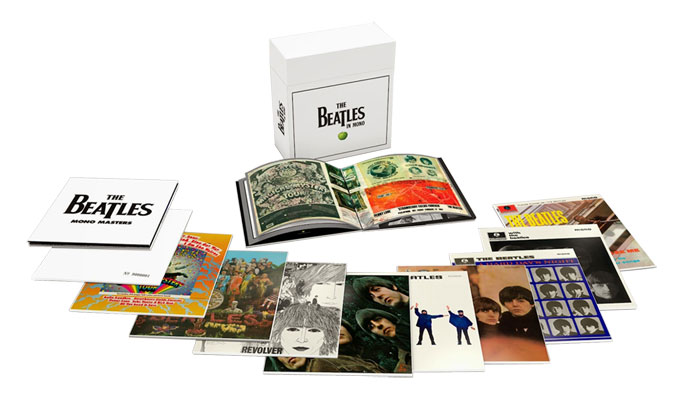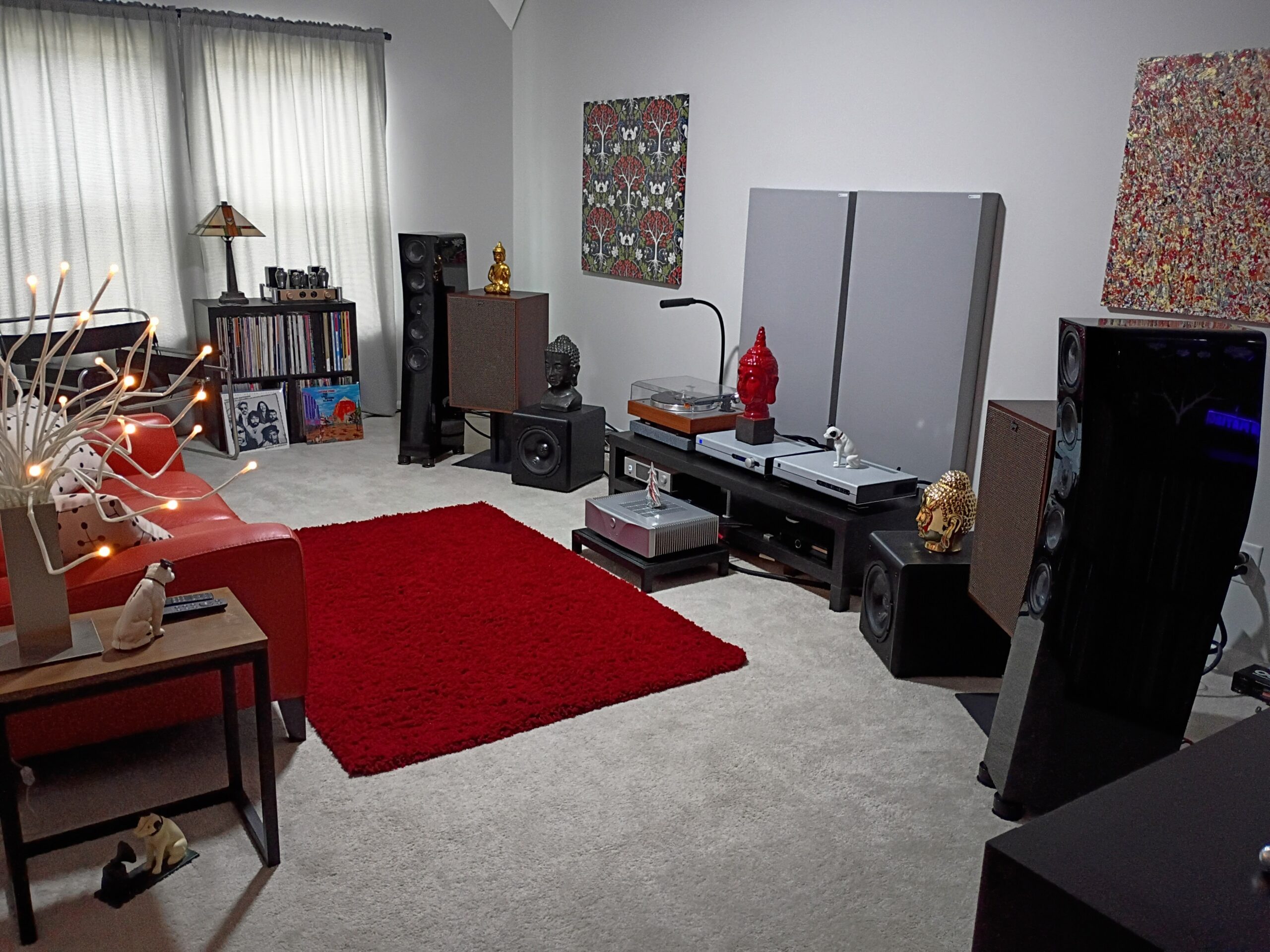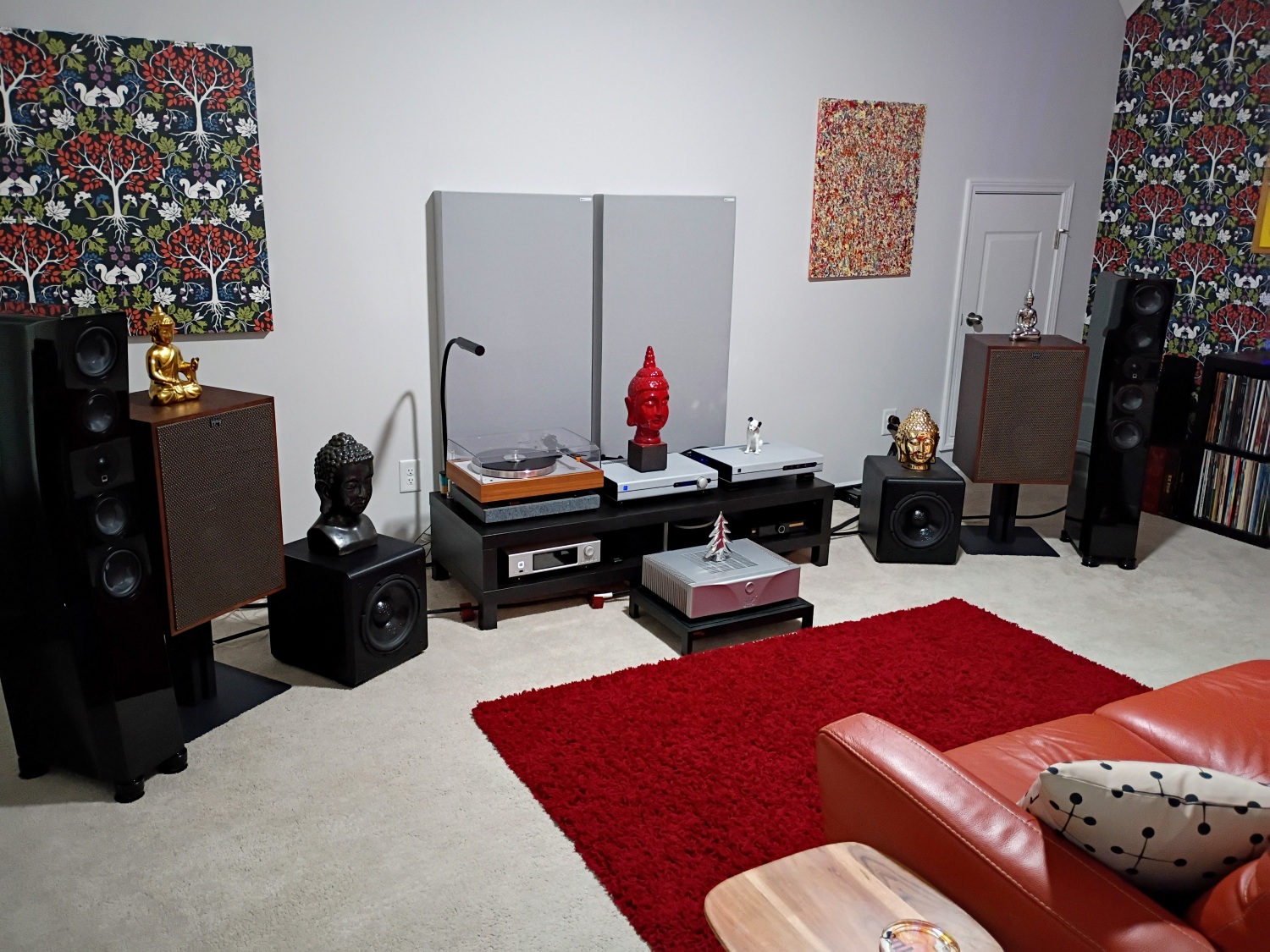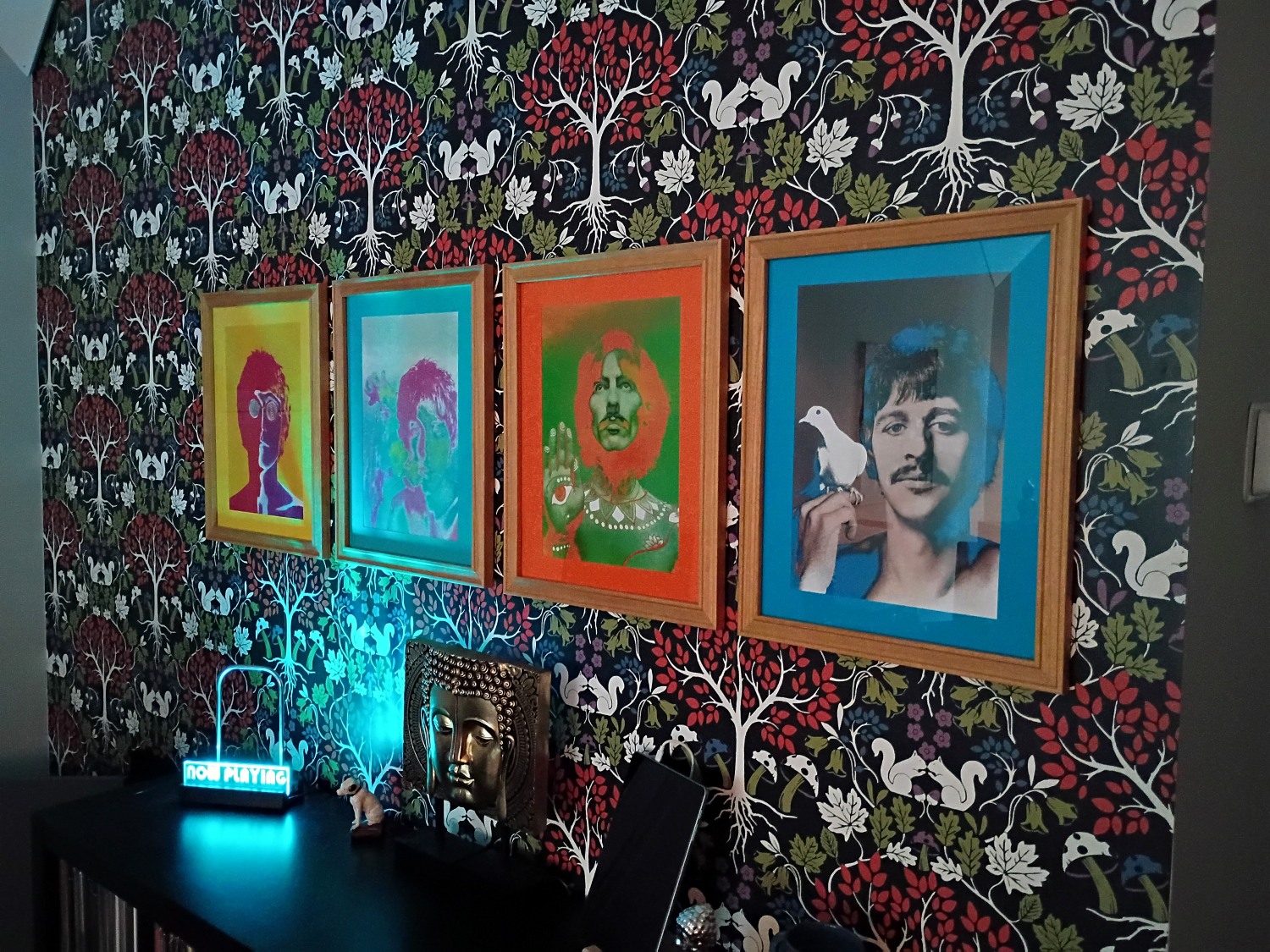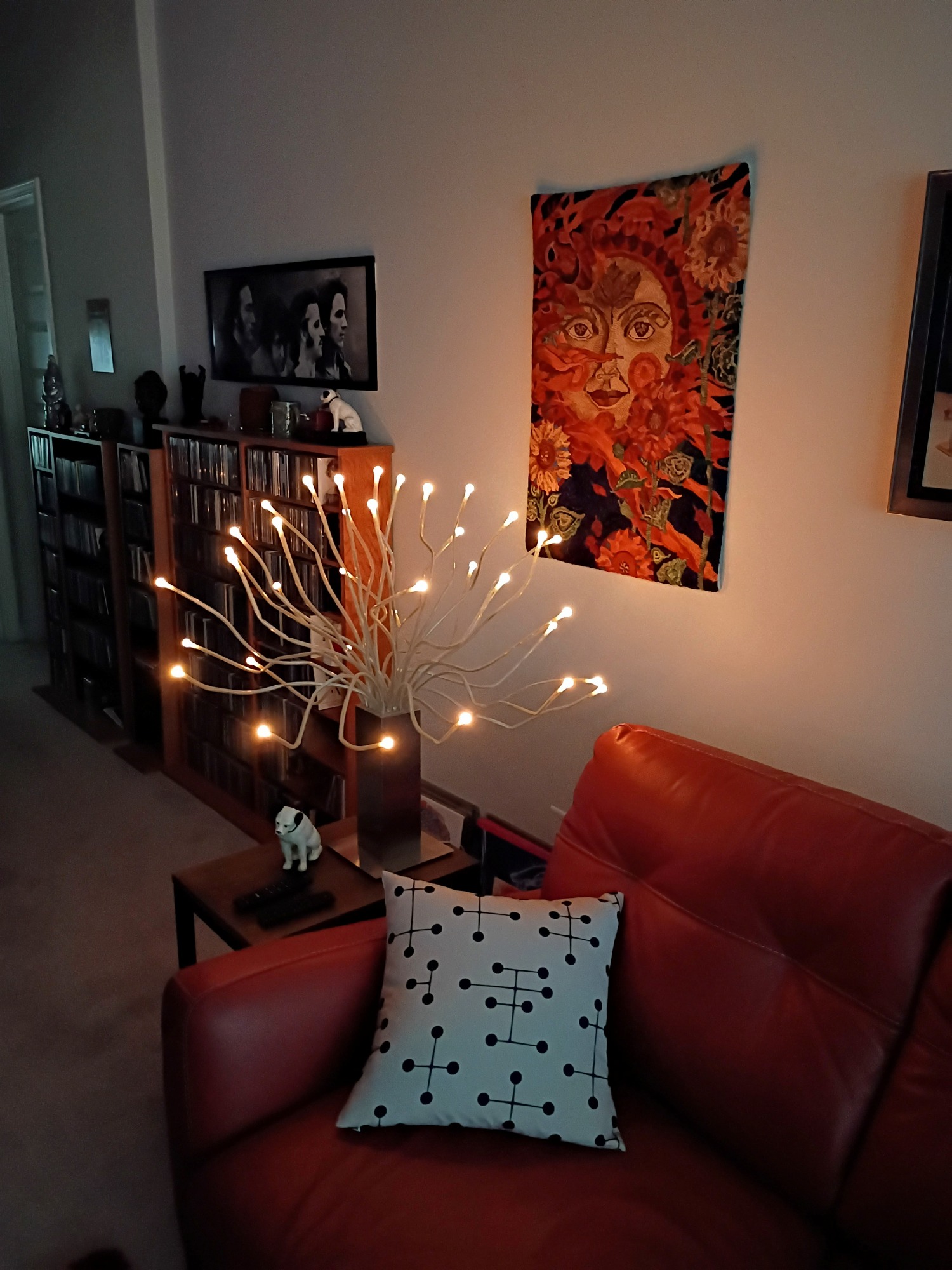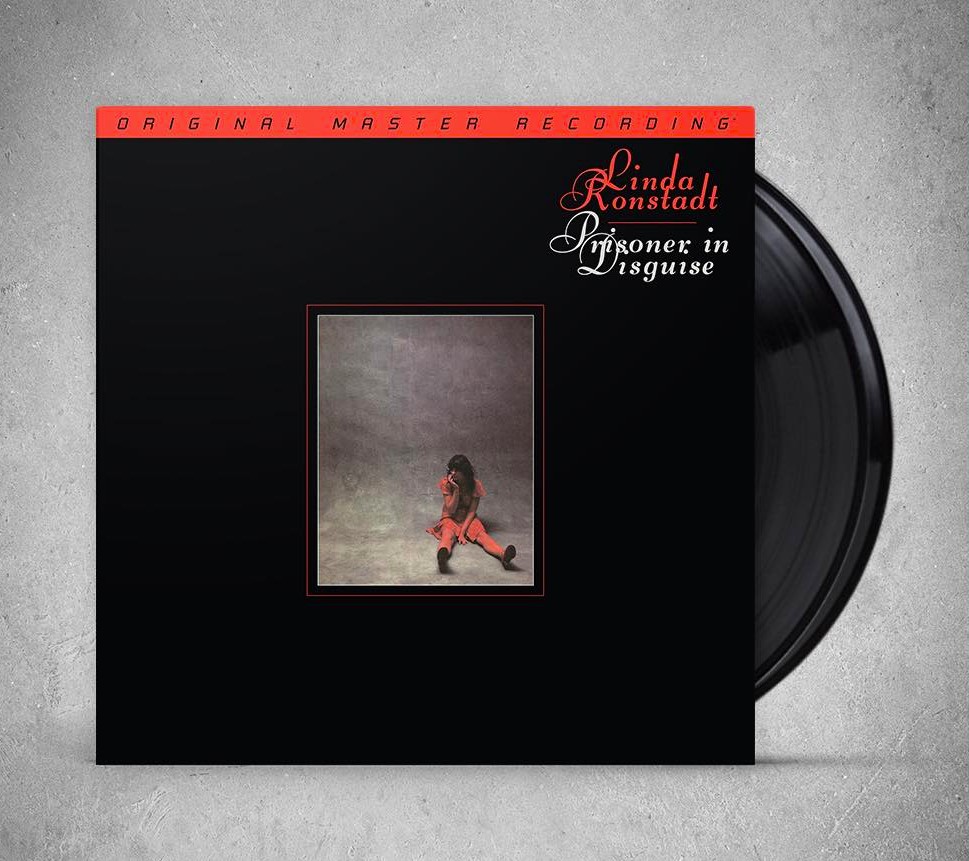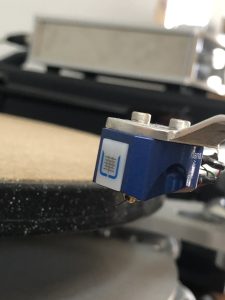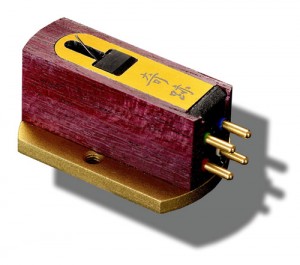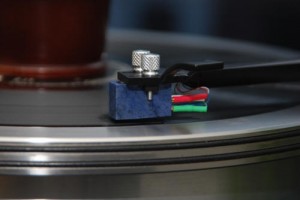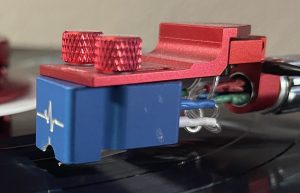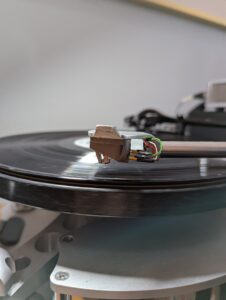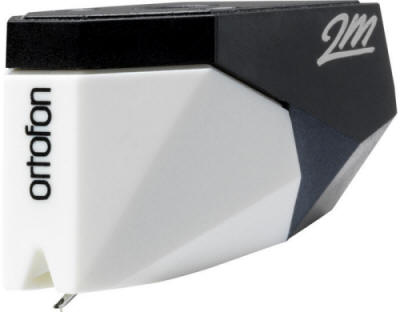
When I first found out last fall that I was getting the new Beatles Mono LP box for review, I contemplated going full-on mono to bring as much authenticity as possible to the process. That would require some serious shuffling of my current system to enable mono listening and a number of equipment acquisitions to easily facilitate rapidly switching between mono and stereo setups. So I quickly got a Class A mono amp from Emotiva—the XPA 1L—which, by the way, I totally loved, and ended up getting a pair for stereo playback. I also got Sean Casey and the guys at Zu Audio to pilfer around their shop and find a single Omen Bookshelf speaker and outfit it ala Dirty Weekend style to match the driver complement of my existing Omens, which they did for a song – those guys are the best! I also decided that I needed to go for a true mono cartridge, and based on my past experiences over at least three decades with various Ortofon pickups, and more recently with the excellent 2M line—I knew that Ortofon's new 2M Mono was the cartridge for me. I fired off an email to my contact at Ortofon, Louis Dorio, who was equally enthusiastic about the project, and in no time at all, the pieces were falling into place.
Reconfiguring the system ended up not being nearly as problematic as I originally imagined; I'd recently found a multichannel SACD player at a second-hand shop to replace the one that got fried in my lightning strike a few years back. I'd always been unhappy in the past with my center-channel setup, but now, with the new Omen Bookshelf serving double-duty as both center channel and mono-only loudspeaker, the situation is greatly improved. For the first time, my center-channel speaker is properly voiced with the rest of my setup, and while the Omen Bookshelf is a very substantial loudspeaker, its relatively diminutive profile allows it to blend in without blocking the projector screen—very important in maintaining proper wife acceptance. Only an occasional cable swap would be necessary to go from stereo to mono, and it would be great to have the option to listen to my RCA and Mercury three-channel SACDs in full resolution once again—woohoo! Meanwhile, back to Mono...
Enter the Ortofon 2M Mono cartridge
The Ortofon 2M line of cartridges are a remarkable achievement, and a Rega tonearm owner's dream come true. I can't help but believe that Per Windfield (former chief engineer at Ortofon and designer of the 2M series) had a particular affinity for Rega arms, especially when you examine the geometry of the body contours of the 2M line. They align so perfectly with the integral headshell on classic Rega unibody arms—like the RB-250 arm that my Rega P2 table came equipped with—that installing a 2M cartridge is remarkably uncomplicated. It's a match made in heaven for long-time Rega users; simply align the front of the cartridge body with the headshell contours and you're all set. And to make things even easier, the cartridge weights throughout the range of the entire 2M line match each other exactly, so you don't even have to rebalance the arm when switching between stereo and mono pickups—could it get any easier? I've checked the setup geometry with my MoFi Geodisc numerous times, and it's always spot-on. I'm currently using their excellent 2M Blue stereo cartridge in my Rega P2 table, and it provides a performance-to-cost ratio that's pretty unbelievable in the audiophile world.
As good as the entire 2M line is, the 2M Mono is a truly exceptional transducer. The sound from this true-mono cartridge just blows away the sound you get from a mono-via-stereo cartridge setup. Because the mono cartridge only deals with the groove signal in a single plane, the resultant sound is impressively quiet compared to the modulation of surface noise and groove geometry shortcomings you often must deal with in playback of mono sources from a stereo cartridge. The end result is that you can really hear very deeply into the music; the 2M Mono sounded magnificent right out of the box, and has only gotten better as it's broken in. Not only do the new Beatles' Mono LPs sound magnificent, but all my old Blue Note and OJC mono LPs magically pour forth from my system like never before!
Mounting couldn't be easier—the cartridge nuts are integral to the cartridge body (no tiny nuts to fiddle with or drop!), and it's a relative snap to install and/or remove to revert back to stereo, especially with a Rega tonearm. I asked for and received the standard mount version of the cartridge, but Ortofon offers a universal plug-and-play version that comes mounted in an integral headshell that's designed to be compatible with most removable headshell type tonearms. I'm sure that will prove to be an exceptionally elegant solution for a lot of audiophiles, because it will allow them to maintain the integrity of their current cartridge setup without the need to procure an additional headshell. Even with the relative ease of switching out cartridges, I'm currently on the lookout for a second turntable that's strictly for mono duty.
The design basics of this cartridge are squarely aimed at compatibility and ease of use. The cartridge is a higher-output (4.0mv) moving magnet design, and incorporates Ortofon's split pole pin design that allows it to deliver a really flat frequency response (20-22,000Hz, +3/-1dB) similar to that of a moving coil design. The 2M Mono comes equipped with an 18µm nude spherical stylus that's mounted to an aluminum cantilever, with a recommended tracking force range of 1.6 – 2.0 grams. I set my supplied sample right in the middle at 1.8g, and I've been very pleased with the cartridge's tracking ability: the 2M Mono will treat your valued LPs very gently. The conversion to mono occurs within the cartridge's internal engine, and the pin connections and hookup procedure are the same as with any stereo cartridge.
Listening Results
All the music I chose to use for review of the 2M Mono were LPs that I also had available in FLAC (and also in mono) on my music server, for easy comparison and evaluation. While I have a pretty high opinion of the current state of digital music playback, I also still listen to a lot of vinyl—hell, the overall cost of my relatively modest analog rig easily triples that of my digital setup! Anyway, comparison of the two would at least make for a more interesting evaluation experience.
First up was the excellent Sundazed reissue of Donovan's classic Sunshine Superman in glorious 180 gram mono. While I've always thought this album sounded pretty good played back via a stereo cart, nothing could have prepared me for the sheer weight and body of Donovan's voice through the 2M Mono—the three-dimensionality of the image cast into the room just about floored me! And the music emerged from a silken and silently black background—it's truly shocking how very little groove modulation noise is presented into the mix with a true mono cartridge. One of my favorite songs on the album is "Bert's Blues," an ode to longtime friend and fellow musician Bert Jansch; I was stunned by the quality (and quantity!) of the upright bass line that really plumbed the depths of my room, without ever becoming flabby or unmannered. In this instance, it was just about a toss-up between the digital files and the LP—the FLACs were sourced from a really good remastered import CD that's a shining example of digital done well. If anything, the LP had perhaps a touch more sparkle on the top end, but that could be in part due to the tube phono stage I employ in my analog setup. I own a number of other Sundazed mono pressings, which I spent some time with during the review process—my overall opinion of their LPs has been seriously elevated, to say the least!
At this point, I decided to see how the 2M Mono would handle less pristine LPs, so I pulled out some of my eighties-era OJC pressings of classic Prestige and Fantasy titles; these LPs sound pretty good when compared to the originals, but the quality control at OJC sometimes got a little sloppy. But at about $6 or so per LP twenty-plus years ago, you pretty much get what you pay for, right? Man, was I blown away by how good these old LPs sounded via the 2M Mono! A great example is the classic Miles Davis Quintet date Workin', which just burst out of the speakers—and the OJCs were never the quietest or flattest pressings. The 2M Mono—the little cartridge that could – plowed though tunes like "Ahmad's Blues," the guilty-pleasure piano jazz vamp that Miles and Coltrane layed out on. No contest here—the LPs were superior in almost every way, and surprisingly quiet. Every OJC mono pressing that I sampled during the process impressed the heck out of me with incredible sound.
I picked up a few of the 200 gram Classic Records Blue Note Mono reissues before Classic disappeared a while back, and while I've always thought they sounded pretty great, I was dumbfounded by how incredible these records sounded when played via a true mono cartridge. And because my turntable doesn't allow VTA changes on the fly, I basically set it to be correct for 180 gram pressings, and would just deal with the less than stellar (and probably accurate) presentation of everything else. Wrong! These records sound so amazingly better than before, especially the mono version of Cannonball Adderley's classic Somethin' Else, which features Miles Davis on trumpet, and is one of the stalwarts of the Blue Note catalog. Comparison-wise to the digital, it gets a little blurry here, because the FLAC files are 24/192 (from Super HiRez), and they sound pretty darn great too!
So now, we come to the whole reason I wanted to embark on this undertaking in the first place: The Beatles In Mono. I really love the early Beatles stuff; it takes me back to a simpler time, when the four lads were so much happier and there was no Yoko-or-Paul induced madness as in the later days. The magic is obvious right out of the gate, on Please, Please Me, when Paul introduces the opening track, "I Saw Her Standing There," with a brisk "One, two, three, four!" Even after all these years, the effect is still stunning and immediate—especially in mono—the British Invasion was on, and pop music would never be the same again. Beatles For Sale provides even more examples of how their craft as musicians had grown in such a short time, with Lennon's "I'm A Loser," and covers of two Carl Perkins tunes, "Honey, Don't" and "Everybody's Trying To Be My Baby." George Harrison was greatly enamored with Carl Perkins, and through his stunning guitar work and Ringo's cheery vocal (on "Honey, Don't), they deliver definitive covers that have become all-time classics. The presentation is nothing less than stunning via the 2M Mono, and almost worth the price of admission alone!
The real proof in the pudding comes with the more mature works, such as in The Beatles (The White Album), their undisputed masterpiece. I've always loved the side one "medley" that consists of "Wild Honey Pie/Bungalow Bill/While My Guitar Gently Weeps/Happiness Is A Warm Gun." It's really almost shocking how many fine details are revealed on the mono version that are either glossed over or just plain edited out on the stereo versions. You always hear about how George Martin lavished so much detail on the mono versions, but until you compare them head-to-head against the stereo versions, with a true mono cartridge, it just doesn't hit you how very true it really is! More acoustic-oriented songs like "Blackbird" and "Julia" are so very three-dimensional that they don't really give up much to the stereo versions. The mono versions sound much more organic than the stereo, and in comparison to the digital files, I definitely give the nod the the LPs!
I know I really just touched on the Beatles Mono LPs; if you'd like to read my in-depth review of the box, it can be found HERE.
In Conclusion
It ended up that my experiment with using a single mono loudspeaker was something of a non sequitur—I found that mono playback via stereo loudspeakers was indistinguishable from the single speaker, as long as the listening chair was in the sweet spot. Of course, if multiple folks were present, then the sound would obviously be coming from either the left or right, and in those kind of instances, I'd go back to single speaker presentation to maintain the effect. Since more often than not, it was only me, using the stereo pair greatly simplified my routine and the intricacies of component connection.
I've always been a die-hard analog fanatic; I'd always choose the LP over the CD any day of the week, but the recent developments in improved digital-to-analog conversion have definitely forced me to rethink my stance. The convenience of digital, versus the romance of the routine of vinyl playback—it's a lot to consider, and a sometimes difficult choice. The way the 2M Mono effortlessly and noiselessly replayed even less than pristine LPs made it much, much easier to embrace the quirks of the analog lifestyle. And I'd probably spent most of my adult life somehow thinking of mono reproduction as inferior to stereo. I now know with certainty that, while definitely different, it's not at all inferior—mono is in a world of it's own. And especially with music like the Beatles' catalog of albums, which was mixed with mono as the intended playback medium, spinning them with a really good mono transducer makes for a very revealing listening experience.
I would say that the 2M Mono has an up-front, somewhat forward quality in it's presentation of the music; the images are sharply detailed, but never etched—and the music is never fatiguing to listen to. This cartridge comes with my highest recommendation. Of course, now I see that Ortofon has released the 2M Mono Special Edition—you pay more money, you get a fine line stylus, improved cartridge body materials, and an improved transducing engine: more of everything (Mikey Fremer really liked it!). But with the very reasonable, real-world asking price and remarkable performance of the baseline model, I don't see how it could get much better than this! Tom Gibbs
Ortofon 2M Mono Phono Cartridge
MSRP $356.00
Ortofon
https://ortofon.com




